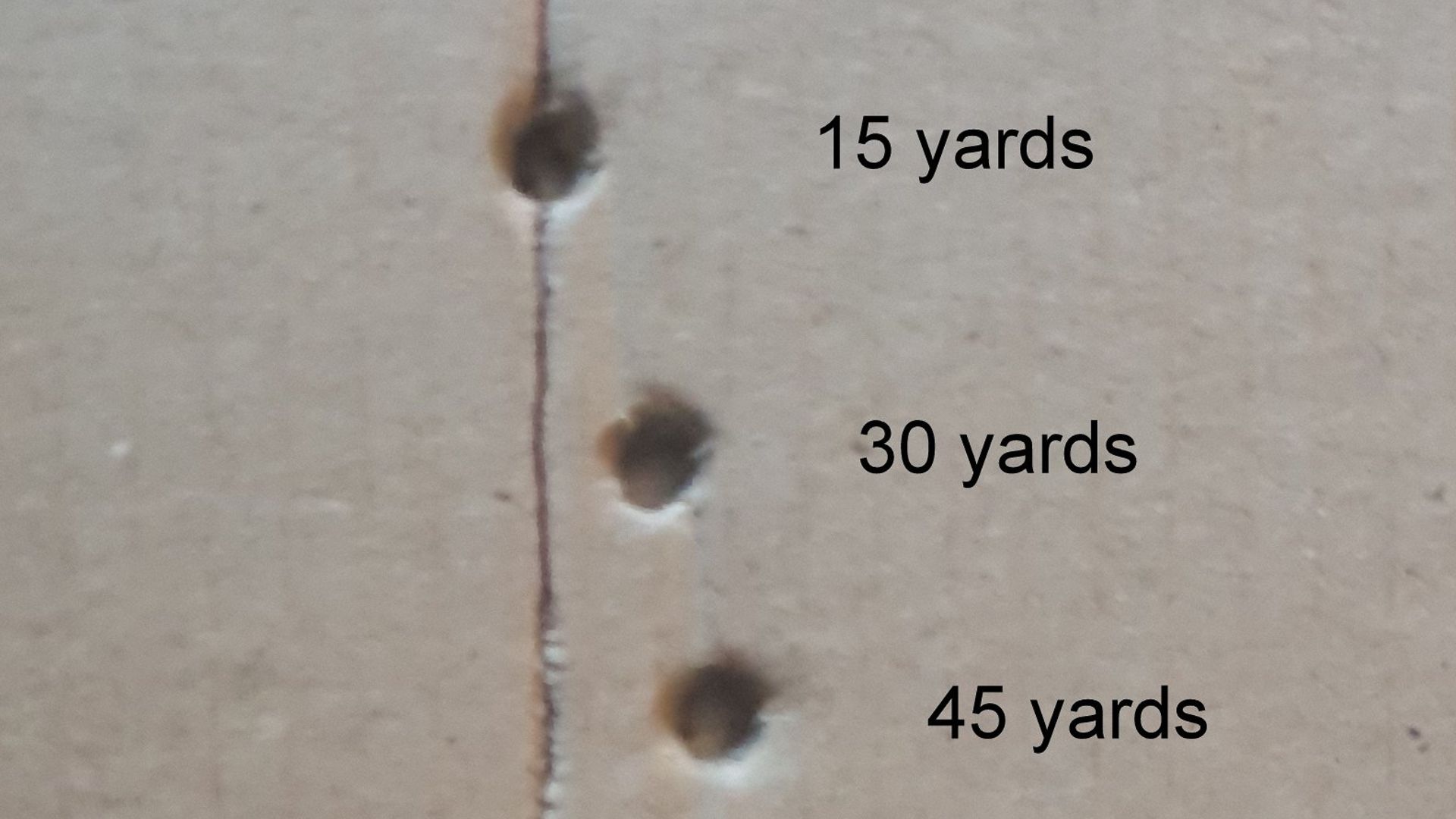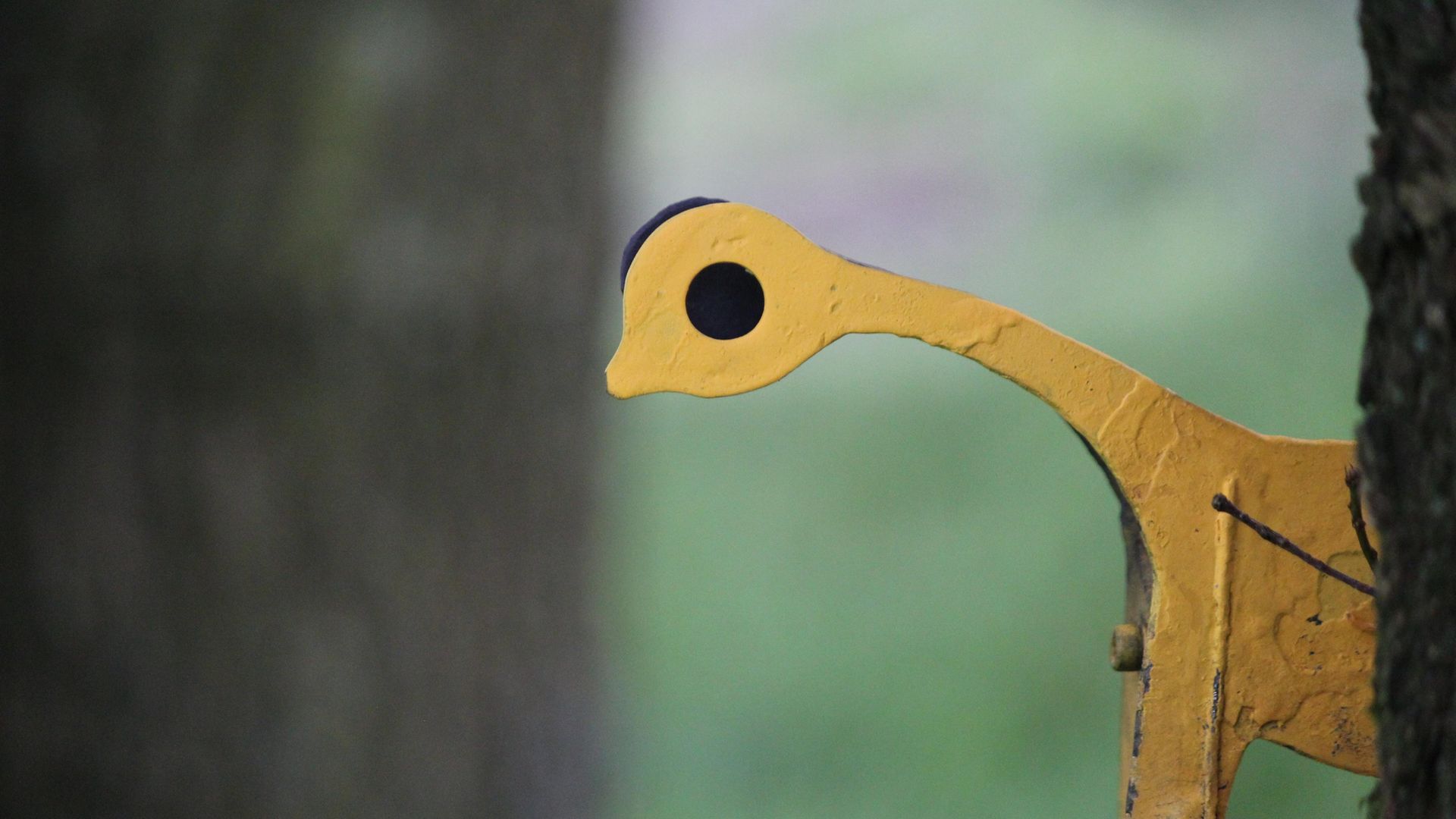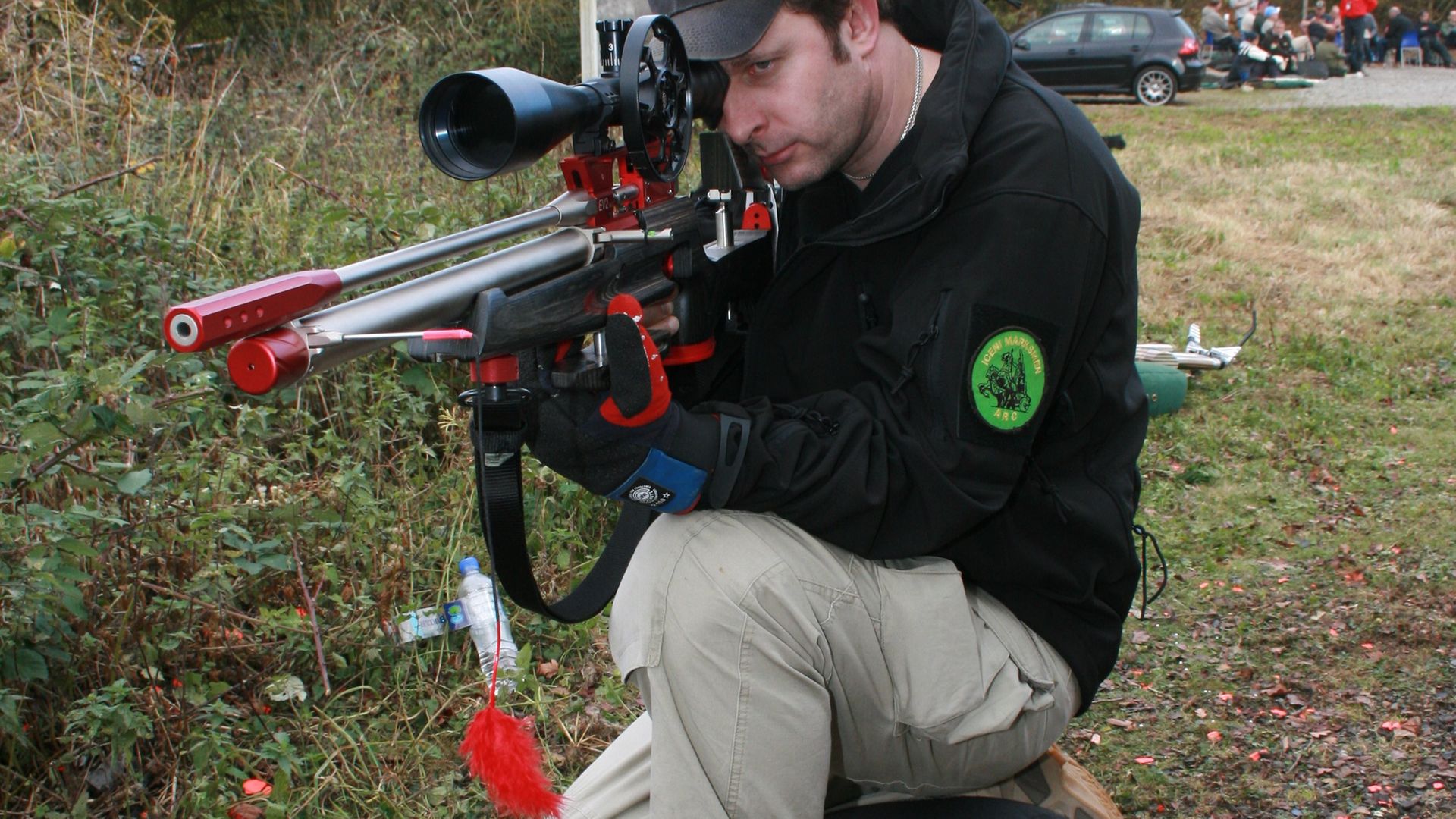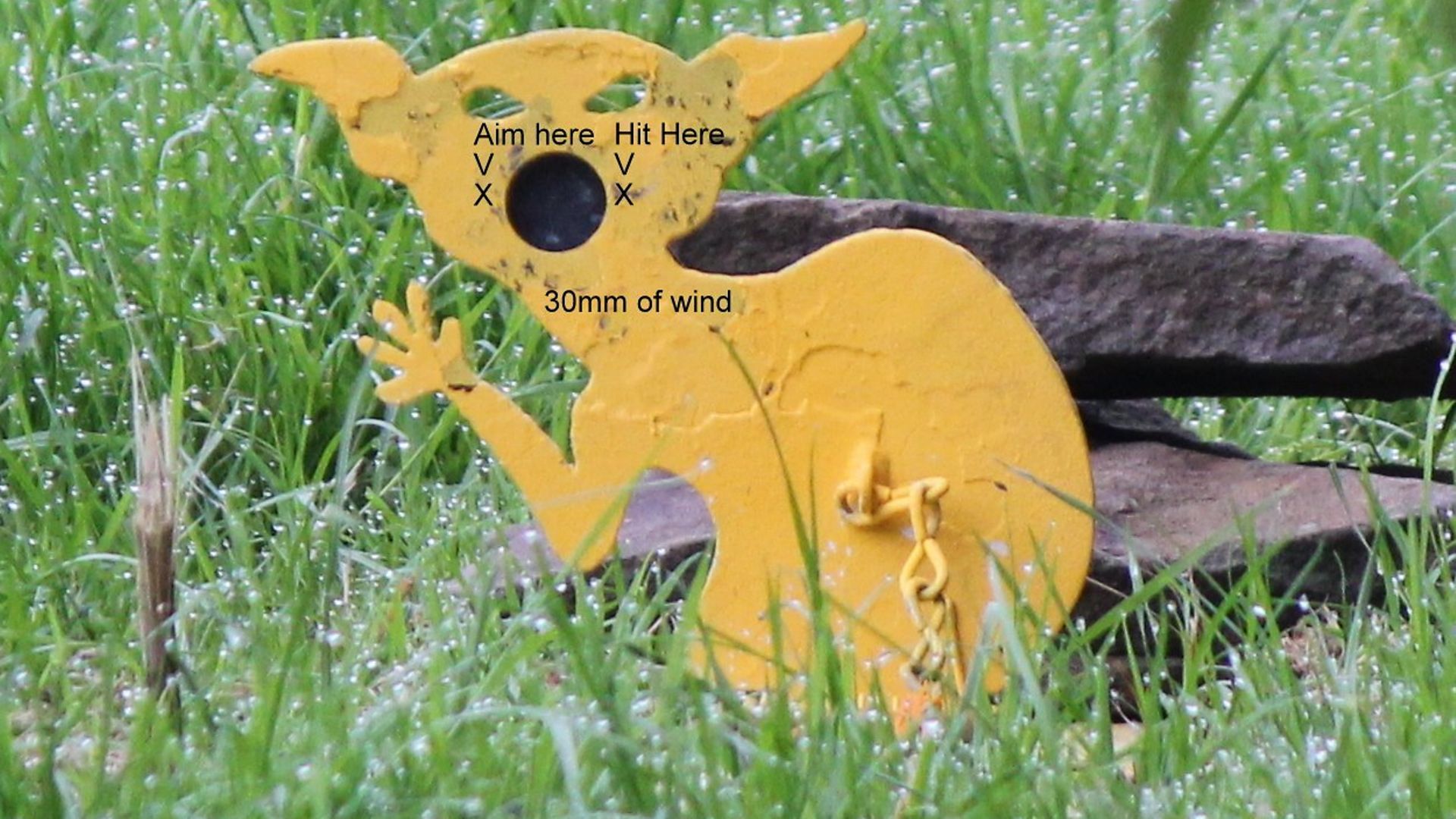Gary Chillingworth provides tips and advice for taking accurate shots with your air rifle in windy conditions
OK, for those of you who know me and are currently rolling around on the floor – yes, I know that recently I have got destroyed on windy days. Yes, in the past some of my best shoots were on windy days, but I fully admit, that I have lost my edge, and I currently fear even a slight breeze. For this reason, I have done a huge amount of research on the subject over recent months, and I’ve tested out some new techniques so that as we move into 2022, my ability to shoot on a windy day will be greatly improved – I hope.
The first thing that we need to know is that there is always wind out there. Even on the stillest of days, your pellet will move a bit, so we are going to look at wind from front and back, from the side, and on an angle. We’ll look at a few tips to help you read the wind, and also talk about a the times when wind can catch you out, but before we start looking at how the wind affects certain shots, there are a few things that you need to think about, one of which is that the wind at the peg, might not be the same as the wind at the target.
Although you might feel the wind on the right side of your face when you’re standing at the peg, it’s highly likely that downrange the wind could be hitting a tree and swirling around, hitting a wall and bouncing back, running along the ground and the undulations might be pushing the wind up or down. So, spend time looking down range and don’t just assume that the wind you feel will be what your pellet gets. Firstly,
let’s try and get the easy ones out of the way.
 credit: Archant
credit: Archant
Shooting with the wind in your face
Often, when you approach a target, the wind will be coming directly at you. You will stand at the peg, throw some leaves in the air and they will hit you squarely in the face. Now, there is a big difference between a breeze and a gale, but for ease of thought, let’s go with a fairly good 10mph breeze. When the wind is against, it will slow your pellet down. If the target is under 30 yards, it probably won’t have a huge affect, but if you are shooting a long target, the wind will have more time to affect the pellet and thus will slow it down. This is a good time to look at the face plate and if there are lots of misses very low, then place your 45-yard aim point higher in the kill then you normally would – it can have a big effect.
If you are shooting a high target at long range, though, the pellet will hit high; this is because the wind is now pushing the underside of the pellet, and this force will create lift and the pellet will hit high, so if I am shooting up with the wind against, I take a few yards off.
 credit: Archant
credit: Archant
Shooting with the wind behind
Wind behind is easier, and like the wind against, it won’t massively affect the pellet out to 30 yards, but at longer ranges, the wind will speed up the pellet and it will hit higher. So, for instance, with a 10mph tail wind, if you are aiming at a 45-yard target, the pellet will hit between your 40- and 45-yard aim point.
Before we get on to side winds, there is something else you need to know. All modern rifles have rifling, hence the name, and this will be either a right- or left-hand twist. So, if you are shooting with a side wind, your pellet will be spinning, and this spin rate will either be cutting into the wind or be pushed by the wind. This is why a lot of rifles take more wind from one way or the other. I had a stunning Daystate X2 and this took 1mil of wind left to right at 40 yards with a 10mph crosswind and only .75 of mil right to left – so check your rifle.
Shooting in crosswinds
Be aware of where your pellet hits. Let’s say your first target of the competition is a 35-yard, 25mm target and the wind is blowing left to right. Look at the kill zone and aim a quarter of a kill outside left edge, and shoot. If the target falls over, reset the target and measure from the point you aimed to the pellet strike. You now have a data point. So, if your next target is longer, give it more – if shorter, give less. Keep measuring and adjusting until the targets get shot up.
 credit: Archant
credit: Archant
Windicators
A lot of shooters use official windicators that are attached to their rifles. These can be a piece of wool or feather on a line, and they can be great for reading the wind at the peg, but again, this will only be at the peg, so don’t assume that it will be the same downrange. Some shooters who smoke or vape use this to read the wind, but this must be done at least 6 feet, or 2 metres, from the firing line.
The two most trusted ways of reading wind is throwing up leaves and seeing where they drift and holding up the string to the target, or if you are in Wales, throw a boulder in the air! For me, the string is the best way to read the wind; not only does it show you where the target is, but you can also see the bow in the string. Sometimes you will get a double bend – the wind blowing right to left at the peg, and then left to right downrange.
Taking high shots in the wind
When you approach the peg, you will often be standing below a high tree or flagpole and you can hear the wind whipping through the branches, but always look close to the ground – look at the leaves on the bushes and the grass. I have shot in comps where it feels like we are in a hurricane, but low to the ground the wind is barely moving. Use your senses, but use them all and don’t always go with your first impression. Remember, that shots high up will normally take more wind then along the ground, and if it’s on a pole in a open field – good luck.
 credit: Archant
credit: Archant
Reading the target for clues
Finally, when you are looking through your scope, look at the target. Are there lots of misses one way? Assume that some shooters have just aimed at the kill and missed an inch left – especially if you have new shooters in front of you. If you can see a bunch of pellet an inch left, you need to be at least ¾” out to the right.
Look at the leaves and the grass around the target; are they being blown hard in one direction consistently? If so, give a good chunk of windage. Is the wind blowing in a cycle? Are the leaves being blown to the right and then relaxing back to their normal position? If they are, watch and shoot in the lull of the cycle. Are the leaves being blown left and right equally? The wind could be from behind, or from the front, so go straight at the target. Is the string being blown and then coming to rest? If so, shoot in the rest period.
Reading wind is something that you just need to practise. Get down to a club or land you have permission on and set out paper targets and try different things. Measure how far the pellets move at different ranges and test your rifles. If shooting in the wind is hard for you, get a springer because they take less than a PCP, and if you want more help, then take a look at the video I made with Shooting and Country TV on shooting in the wind for extra tips and tricks. Lastly, if you know anything that I have missed, please let me know because I need all the help I can get!